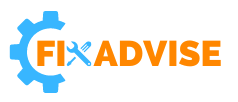When comparing Push Connectors vs. wire Nuts, it’s essential to consider the connection’s ease of use, safety, and quality. For non-electricians, push-in connectors are easier and quicker to use, while wire nuts require more knowledge and skill to use effectively.
Appropriate splicing devices for electrical connections are critical to safety and efficiency. Push-in connectors and wire nuts are two popular options for joining electrical wires. Understanding the difference between these two options can help you decide on your electrical projects.
Push-in connectors, also known as push-in wire connectors, offer a quick and effortless way to connect wires without twisting and crimping. On the other hand, wire nuts, also called twist-on wire connectors, require manually twisting the wires together and securing them with the nut.
We will explore the advantages and disadvantages of both types of connectors to help you determine which is best suited for your needs.
Push-in Connectors
Push-In Connectors: Push-in connectors offer a convenient way to connect electrical wires without twisting and securing them with wire nuts.
Push-in connectors feature a simple insertion method for inserting wires directly into the connector slots. Their advantages over wire nuts include ease of use, especially for non-electricians, and the ability to save time and space.
These connectors find applications and suitability in various electrical installations for residential and commercial use.
However, ensuring compliance with safety and regulations to meet code specifications is crucial.
Wire Nuts
Wire nuts are traditional electrical connectors used to secure and protect the ends of electrical wires. They work by twisting the exposed wire ends together and then covering them with the wire nut, providing a secure connection.
Comparison with push-in connectors reveals that while wire nuts are reliable and widely used, push-in connectors offer a quicker and more convenient installation. However, wire nuts are known for their durability and longevity, making them a preferred choice in many electrical applications.
Considering the pros and cons, wire nuts are known for their solid and durable connections. However, they require more manual labor during installation than push-in connectors. Additionally, wire nuts are cost-effective and low-maintenance, making them an economical choice for electrical connections.

Credit: www.nytimes.com
Frequently Asked Questions On Push In Connectors Vs Wire Nuts
Is It Okay To Use Push In Wire Connectors?
Yes, push-in wire connectors are okay. However, they must still be used in an approved electrical box, enclosure, or fixture to ensure safety and meet NEC regulations. Push-in connectors can save time and space in electrical wiring projects.
Are Push Connectors Better Than Wire Nuts?
Push connectors are easier for non-electricians to use, while wire nuts require more expertise. Both can make strong connections if used correctly.
Do Push In Electrical Connectors Meet Code?
Yes, push-in electrical connectors meet code and are typically UL listed and meet CE electrical codes. It’s essential to use NEC-approved devices in approved electrical boxes, enclosures, or light fixtures for safety and to pass inspections.
Are Wago Push Connectors Safe?
Yes, WAGO push connectors are safe. The connectors undergo rigorous internal tests to ensure high safety and reliability. They meet strict quality standards and are designed for security and peace of mind.
Conclusion
In this comparison, push-in connectors and wire nuts clearly have advantages and limitations. While push-in connectors offer ease of use and space-saving benefits, wire nuts ensure a secure and reliable connection. Ultimately, the choice depends on the specific requirements of the electrical project at hand.
Consider the application, wire size, and installation environment to determine which option best suits your needs.

